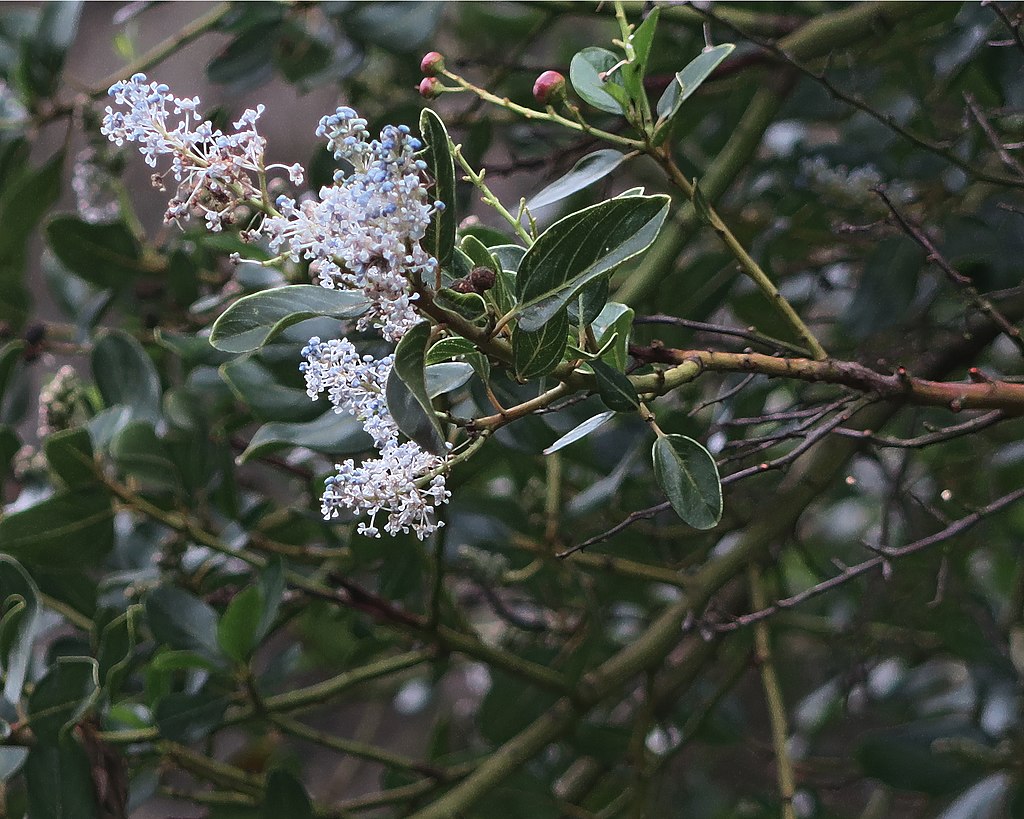
Also known as redheart, this evergreen shrub is native to the scrub and chaparral of the coastal strip of southern California south of San Luis Obispo County to northern Baja California. It is a member of the buckthorn family, Rhamnaceae, that also includes jujube tree and Christ’s thorn. The plant is widely branching and grow’s up to 20′ tall. The trunk is rough-barked near the base and the branches have smooth, olive green bark and are stiff, sharp or spiny at the tips. The oval leaves are thick, tough, hairless, and up to 2″ long by 1″ wide. Six inch long clusters of white to pale blue flowers appear in spring and are followed by smooth, round capsules about .2″ across containing 3 seeds. The flowers attract bees, butterflies and other insects, and the fruits provide food for birds and small mammals. Plants are tolerant of drought and pruning and are useful for erosion control, as hedges and in xeriscapes. The genus name, Ceanothus, is from the ancient Greek κεάνωθος (keanōthos), the name of a thistle. The specific epithet, spinosus, is the Latin word meaning thorny and refers to to the spiney nature of the branch tips.
Type: Evergreen flowering shrub (may be summer semi-deciduous)
Outstanding Feature: Flowers
Form: Rounded
Growth Rate: Rapid
Bloom: Clusters of white to pale blue flowers in spring
Size: 10-20′ h x 10′ W
Light: Full to part sun
Soil: Rocky, dry to moderately moist, well-drained; tolerates clay
Hardiness: Zones 7-10
Care: Needs no irrigation once established
Pests and Diseases: Generally healthy but root rot can result from overwatering.
Propagation: Seed (with hot water treatment followed by 2 months stratification)
Outstanding Selections: None
Photo Credit: John Rusk Wikimedia Commons